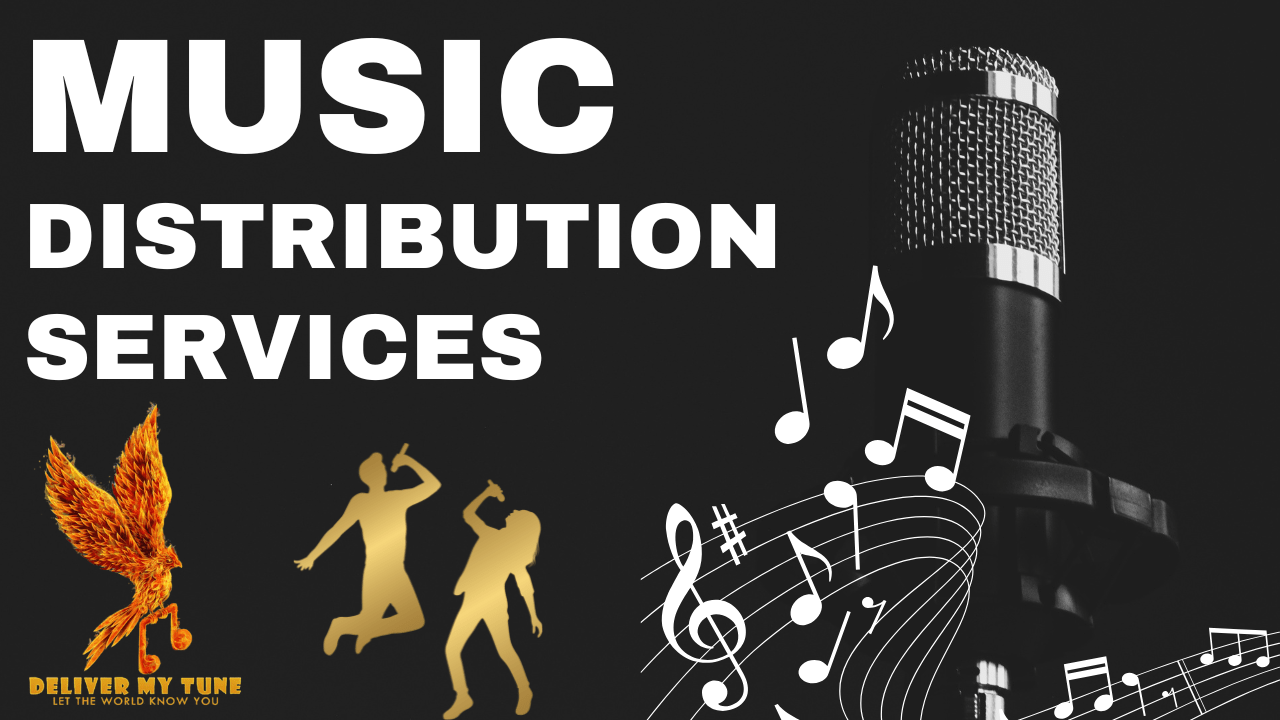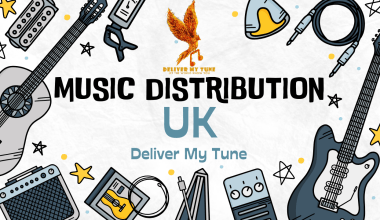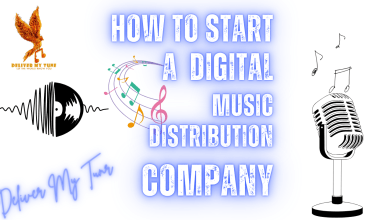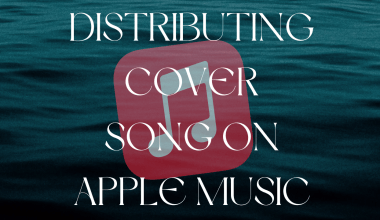Getting your music heard by a global audience is no longer a dream limited to artists signed with major record labels. With the rise of music distribution services, independent artists now have the power to reach millions of listeners worldwide. But what are music distribution services, and how do they work? This guide dives deep into everything you need to know about music distribution, covering how it works, the benefits, types of distribution services available, and tips on choosing the right service to make the most of your music career.
If you’re an artist ready to release your music to a global audience, a comprehensive understanding of music distribution services is essential. Whether you’re looking to distribute your first single or your fifth album, this guide will provide you with insights and tips to help you make informed decisions for your career.
What are Music Distribution Services?
Music distribution services are platforms or companies that act as a bridge between artists and streaming platforms. These services manage the delivery of music from creators to popular streaming services and digital stores, such as Spotify, Apple Music, Amazon Music, and YouTube Music. They handle the logistical aspects of distribution, such as file formatting, metadata management, and compliance with platform guidelines. This process ensures that artists’ music is accessible to listeners globally, helping them reach new fans and generate income through streaming royalties.
These services simplify the complex process of distributing music, allowing artists to focus on what they do best—creating music. By partnering with a distribution service, artists can have their songs available on hundreds of platforms worldwide without needing to individually upload or manage accounts on each one.
Importance of Music Distribution Services
The digital transformation of the music industry has redefined the traditional role of record labels. Today, artists have a variety of options for distributing their music, and music distribution services play a critical role in this ecosystem. Here’s why they’re essential:
- Access to a Global Audience
Without a distribution service, it would be almost impossible for independent artists to get their music onto platforms like Spotify or Apple Music. Distribution services make this access seamless, giving artists an opportunity to connect with fans worldwide. - Revenue Generation
Streaming platforms pay royalties for every stream, download, or purchase of an artist’s music. Music distribution services help artists monetize their music by collecting royalties from each platform and passing them on to the artist, usually for a fee or a small percentage of the earnings. - Professional Presentation
These services often help with metadata, cover art, and track organization, ensuring your music appears professional on all platforms. This consistency enhances the listener experience and increases your music’s chances of being featured in playlists and recommendations. - Time and Effort Savings
For independent artists, managing multiple streaming accounts can be overwhelming. Music distribution services streamline the entire process, allowing artists to focus on creating music rather than dealing with the technicalities of distribution. - Enhanced Discoverability
Some distributors offer marketing services, such as playlist pitching and social media integration, which can increase the chances of your music being discovered by new listeners. The right distribution strategy can help boost an artist’s visibility across digital platforms.
Types of Music Distribution Services
Music distribution services come in several types, each catering to different needs. Here’s a breakdown of the main types:
1. Digital Music Distribution Services
Digital music distributors focus on getting songs onto streaming platforms and digital stores. These services typically offer a quick and efficient process, making them popular among independent musicians. Popular digital music distributors include DistroKid, TuneCore, and Deliver My Tune.
2. Full-Service Music Distributors
Full-service music distributors offer a range of services beyond just digital distribution. These companies often handle physical distribution, marketing, and even artist development, acting as a one-stop-shop for artists looking for a more hands-on approach. While they are usually more expensive, these distributors provide added support, making them ideal for artists with larger budgets or established fan bases.
3. Independent Music Distribution Platforms
Independent platforms offer flexible distribution options, often catering to niche or emerging artists who need personalized services. These distributors tend to focus on helping indie artists reach their target audience through tailored plans and dedicated support teams.
4. DIY Music Distribution Platforms
DIY platforms allow artists to self-manage their music distribution. This type of service is ideal for artists who prefer to retain control over their music and marketing. They allow artists to upload their tracks directly, manage metadata, and control the distribution process. Examples include platforms like Bandcamp and SoundCloud, which combine social media and distribution elements.
Each type of distribution service has its own strengths, and the best option for an artist depends on their goals, budget, and level of experience.
How to Choose the Right Music Distribution Service
Choosing the right music distribution service is crucial for achieving your career goals. Here are factors to consider:
1. Pricing Models
Pricing models vary widely among distribution services. Some charge a one-time fee, while others require annual or monthly subscriptions. Look for a service that fits your budget and consider any additional costs, such as those for analytics or playlist pitching.
2. Royalty Splits
Different distributors offer various royalty splits, with some allowing artists to keep 100% of their earnings, while others take a percentage. Assess how much of your revenue you’ll retain and whether the fee structure aligns with your financial goals.
3. Distribution Reach
Verify the platforms each distributor supports. The best distributors offer distribution to all major streaming services, including Spotify, Apple Music, Tidal, Amazon Music, and YouTube Music. Some may even cover emerging platforms, giving you broader exposure.
4. Additional Features and Tools
Some services provide valuable extras, such as data analytics, marketing support, or playlist pitching. These features can greatly impact your music’s reach and success, so consider what additional tools each distributor offers.
5. Customer Support
Quality customer support is essential, especially when issues with metadata, royalties, or release dates arise. Look for a distributor that offers prompt and reliable support to help with any concerns you may have.
6. Ease of Use
An intuitive and user-friendly interface can make a huge difference, especially for artists who want to manage their distribution independently. Ensure that the platform is easy to navigate and provides clear instructions for uploading, editing, and managing your music.
How Music Distribution Services Work
Understanding the process behind music distribution can help you make better use of the service. Here’s a breakdown:
- Upload Your Music: The process begins when an artist uploads their music files, cover art, and metadata to the distributor’s platform. This metadata includes details like song title, artist name, genre, and release date, all of which are essential for discoverability.
- Delivery to Platforms: Once your music is uploaded and the metadata is verified, the distribution service sends your songs to various streaming platforms and digital stores. Each platform has its own set of requirements, which the distributor ensures are met.
- Royalty Collection and Reporting: As people listen to or purchase your music, royalties are generated. The distributor collects these royalties from each platform and distributes them to the artist based on their fee structure.
- Analytics and Insights: Most distributors provide analytics that show how your music is performing across platforms. You can use this data to adjust your promotional strategies and optimize future releases.
- Ongoing Support and Maintenance: Some distributors offer ongoing support, including re-submitting tracks if issues arise, updating metadata, and helping with promotional activities.
Top Music Distribution Services in 2024
Let’s take a closer look at some of the leading music distribution services in 2024, known for their features, affordability, and support.
1. Deliver My Tune
Known for its focus on transparency and artist empowerment, Deliver My Tune offers distribution to over 100 platforms. This service provides fair royalty splits and extra features like AI mastering, making it popular among indie artists.
2. DistroKid
DistroKid is highly affordable, offering unlimited song uploads for a yearly fee. Known for its quick distribution process, it’s ideal for independent artists who release music frequently. DistroKid also offers additional services, like YouTube content ID and social media sharing.
3. TuneCore
TuneCore is one of the most popular distributors due to its extensive platform reach and comprehensive analytics. It charges per release, which can be expensive for frequent releases, but the quality of service and support is excellent.
4. CD Baby
CD Baby offers a one-time fee structure per release, with no annual fees. It supports physical distribution and sync licensing in addition to digital distribution, making it ideal for artists looking to explore multiple revenue streams.
5. AWAL
AWAL is selective about the artists it accepts but offers robust support, including playlist pitching and marketing resources. This distributor is a good choice for artists with an established fanbase who want more personalized service.
How to Maximize Your Success with Music Distribution Services
To ensure your music reaches its full potential, here are some strategies to make the most out of your music distribution service:
- Optimize Your Metadata
Metadata is essential for discoverability on streaming platforms. Ensure that your song titles, artist name, genre, and other details are accurately filled in. Consistent and accurate metadata improves the chances of your music appearing in relevant searches. - Promote Your Release
A distribution service can place your music on streaming platforms, but it’s up to you to promote it. Share your music across your social media channels, email newsletters, and music blogs to drive listeners to streaming platforms. - Leverage Data and Analytics
Take advantage of the data your distributor provides to understand where your music is gaining traction. Use these insights to focus your marketing efforts on the platforms and regions where your music is popular. - Release Consistently
Regular releases can help you stay relevant and grow your audience. Plan your releases strategically and keep your fans engaged with new music regularly. - Engage with Fans on Streaming Platforms
Some distributors offer tools to help you connect with fans directly on streaming platforms, such as Spotify’s Artist Pages. Keep your profiles updated and engage with your audience to create a loyal fan base. - Submit Your Music to Playlists
Playlists are one of the most effective ways to gain exposure. Use playlist pitching tools offered by your distributor or reach out to curators to get your songs featured on popular playlists.
Common Challenges in Music Distribution and How to Overcome Them
While music distribution services simplify the process, artists may still face challenges. Here’s how to address them:
- Metadata Errors
Incorrect metadata can lead to issues with royalties and discoverability. Double-check all details before submitting your music and reach out to customer support if any corrections are needed. - Delayed Releases
Distribution delays can happen if the distributor’s timeline isn’t considered. Plan your release schedule well in advance and allow extra time for unexpected issues. - Royalty Disputes
Occasionally, discrepancies may arise in royalty calculations. Track your earnings carefully and maintain records to resolve any disputes with your distributor. - Limited Promotion Opportunities
Smaller distributors may offer fewer promotional tools. In such cases, take the initiative to reach out to playlist curators, collaborate with influencers, and promote on social media.
Conclusion
In today’s digital age, music distribution services have made it possible for artists to achieve global reach, generate revenue, and manage their music careers independently. Choosing the right service, optimizing your approach, and engaging with fans can elevate your music to new heights. With the right tools and strategies, music distribution services empower artists to share their art, reach global audiences, and build successful careers in the music industry.
As you navigate your distribution journey, remember that consistency, quality, and fan engagement are key to long-term success. So, take the first step, choose the distribution service that aligns with your goals, and let your music make waves across the world!
Related Articles:
For further reading, explore these related articles:
- Understanding Music Royalties: What You Need to Know About Distribution
- How to Remove Another Artist’s Song from Your Artist Profile
- How to Remove Another Artist’s Song from Your Artist Profile
For additional resources on music marketing and distribution, visit Deliver My Tune.






